Sign up. Be inspired. Get clicking.
Exploring the different types of sustainable aviation fuel
1 January 2023
Sustainable aviation fuel (SAF) is transforming the aviation industry. It can reduce carbon dioxide (CO2) emissions by up to 80% compared to conventional jet fuel. This makes it a crucial step towards making air travel more sustainable.
SAF is produced from various non-petroleum sources such as waste, plants, and oils. Different methods are used to create it, all of which are approved by ASTM International. These include Fischer-Tropsch and alcohol-to-jet processes, among others.
As the aviation sector aims to lower its carbon output, SAF is an essential solution. By exploring the different types of sustainable aviation fuel, we can understand how it can reshape the industry. It's a vital step towards a more sustainable future in aviation.
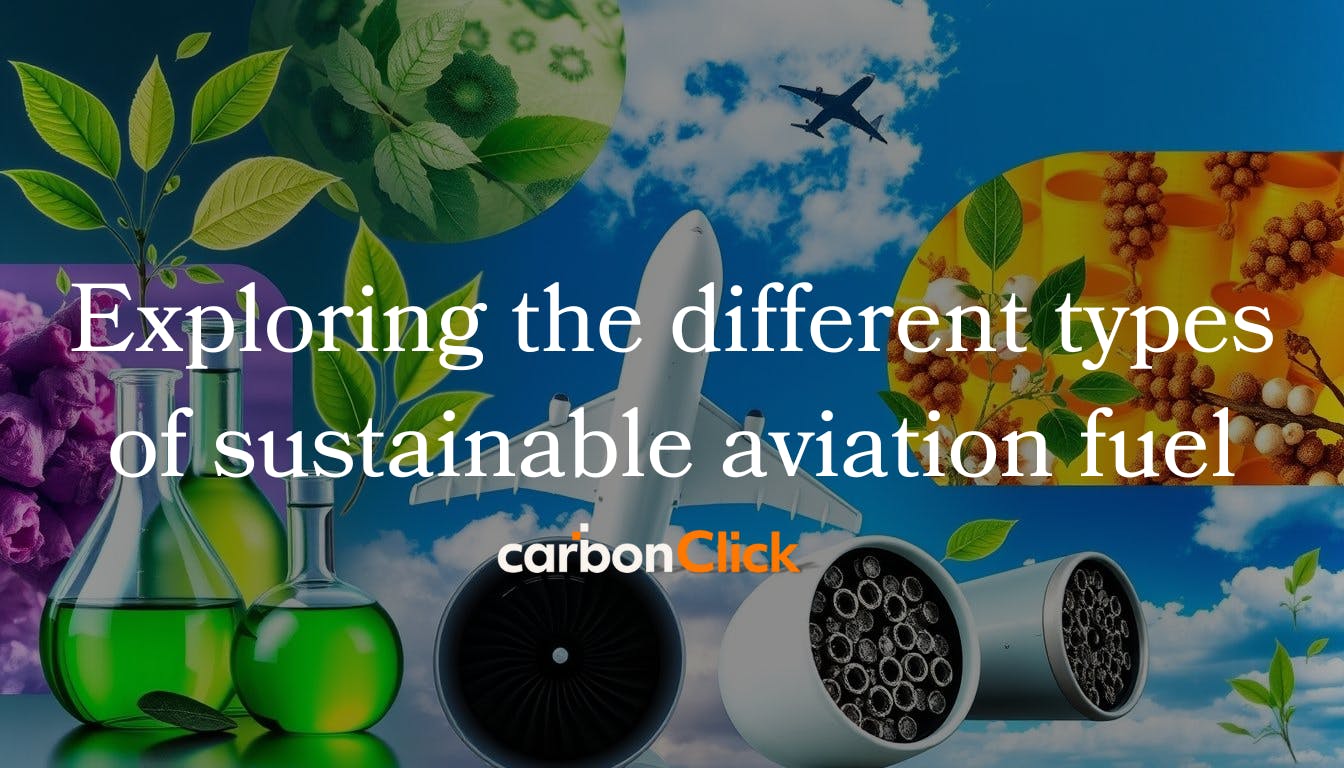
What is Sustainable Aviation Fuel (SAF)?
Sustainable aviation fuel (SAF) is a special jet fuel made from non-petroleum sources. It aims to reduce greenhouse gas emissions from flying. SAF can be blended with regular Jet A fuel, up to 50% depending on the source.
Over 360,000 flights have used SAF at 46 airports, primarily in the US and Europe. This demonstrates its increasing adoption.
Definition and overview of SAF
SAF is a sustainable fuel for aircraft, replacing traditional jet fuel. It is produced from renewable or waste materials, such as used cooking oil and plant oils. The methods of production vary, each presenting its own advantages and challenges.
Benefits of SAF over conventional jet fuel
SAF offers numerous advantages over conventional jet fuel. It is compatible with existing aircraft and fuel systems. It can potentially reduce greenhouse gas emissions by up to 94%, depending on the production method used.
SAF also provides a wider array of materials and production methods. This presents a significant opportunity for the aviation industry to lower emissions and adopt more sustainable practices.
The target for aviation by 2050 is to achieve carbon neutrality. SAF is essential to reaching this aim. With further research and development, air travel could become significantly cleaner in the future.

Production pathways for sustainable aviation fuel
The aviation industry is working diligently to make flying more sustainable. They are exploring Fischer-Tropsch SAF, FT-SPK fuel, and other Fischer-Tropsch production options for SAF. They are also employing HEFA SAF (hydroprocessed esters and fatty acids), HFS-SIP SAF (fermented sugar SAF), and synthetic isoparaffins SAF methods.
Fischer-Tropsch (FT) synthetic paraffinic perosene (SPK)
The Fischer-Tropsch SAF method converts woody biomass into syngas. This syngas is subsequently transformed into jet fuel. This method is approved by ASTM and allows for a 50% blend with regular Jet A fuel.
Hydroprocessed esters and fatty acids (HEFA)
The HEFA SAF method utilises plant oils, animal fats, and waste greases. It refines these materials into a vegetable oil-based SAF. This method is also ASTM-approved and allows for a 50% blend with Jet A fuel.
Hydroprocessed fermented sugars to synthetic isoparaffins (HFS-SIP)
The HFS-SIP SAF method converts sugars derived from biomass into hydrocarbons. This method is ASTM-approved and has a 10% blend limit with Jet A fuel.
Types of sustainable aviation fuel
Sustainable aviation fuel (SAF) is becoming increasingly important for reducing carbon emissions in aviation. There are various types of SAF being developed and approved for use. These include Alcohol-to-Jet (ATJ) Synthetic Paraffinic Kerosene, Catalytic Hydrothermolysis Synthesized Kerosene (CH-SK), and Hydrocarbon-Hydroprocessed Esters and Fatty Acids (HC-HEFA).
The ATJ method utilises plant waste to produce synthetic kerosene. The CH-SK process converts vegetable oils and animal fats into kerosene. The HC-HEFA method generates a hydrocarbon-based SAF from a range of fatty acids.
These types of SAF have been approved by ASTM International, the global standards organisation. They can be blended with regular jet fuel up to 50% without requiring modifications to engines or fueling systems. The availability of diverse SAF types and feedstocks is essential for enhancing their adoption in aviation.
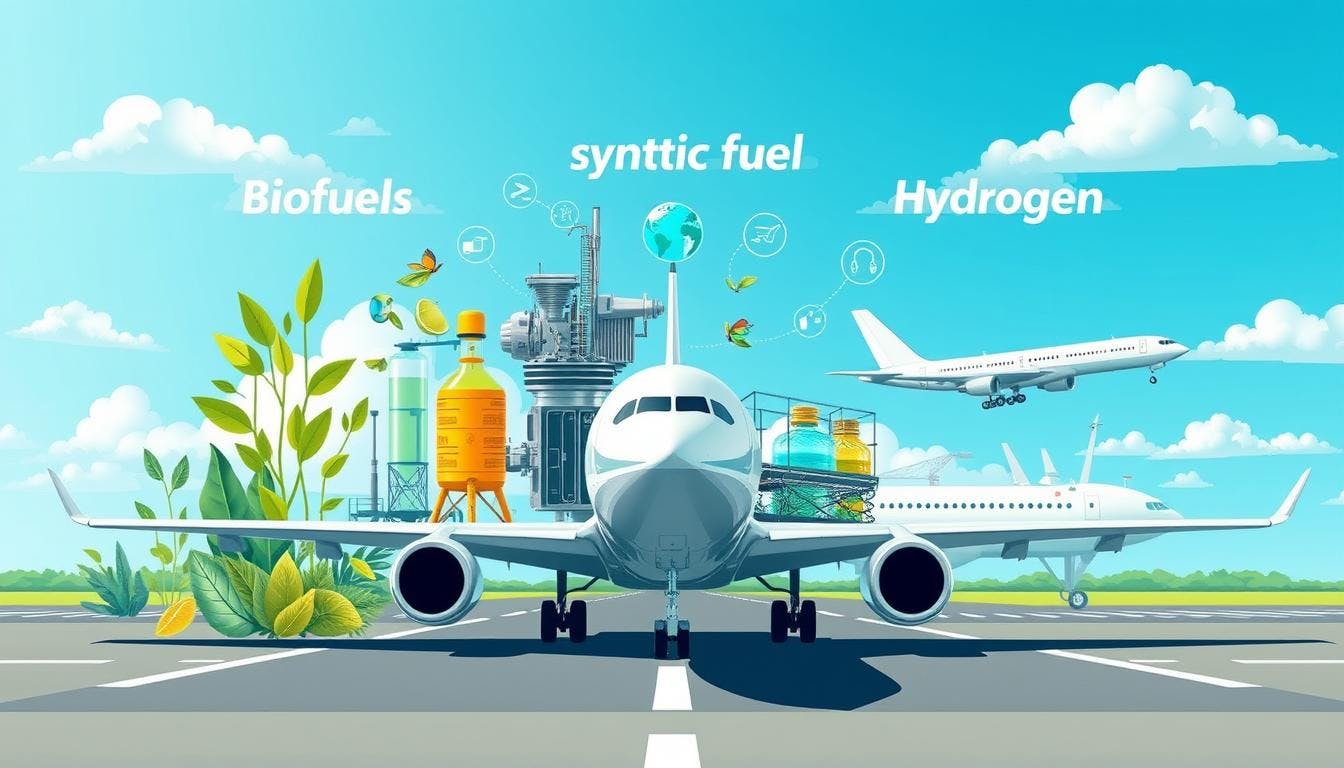
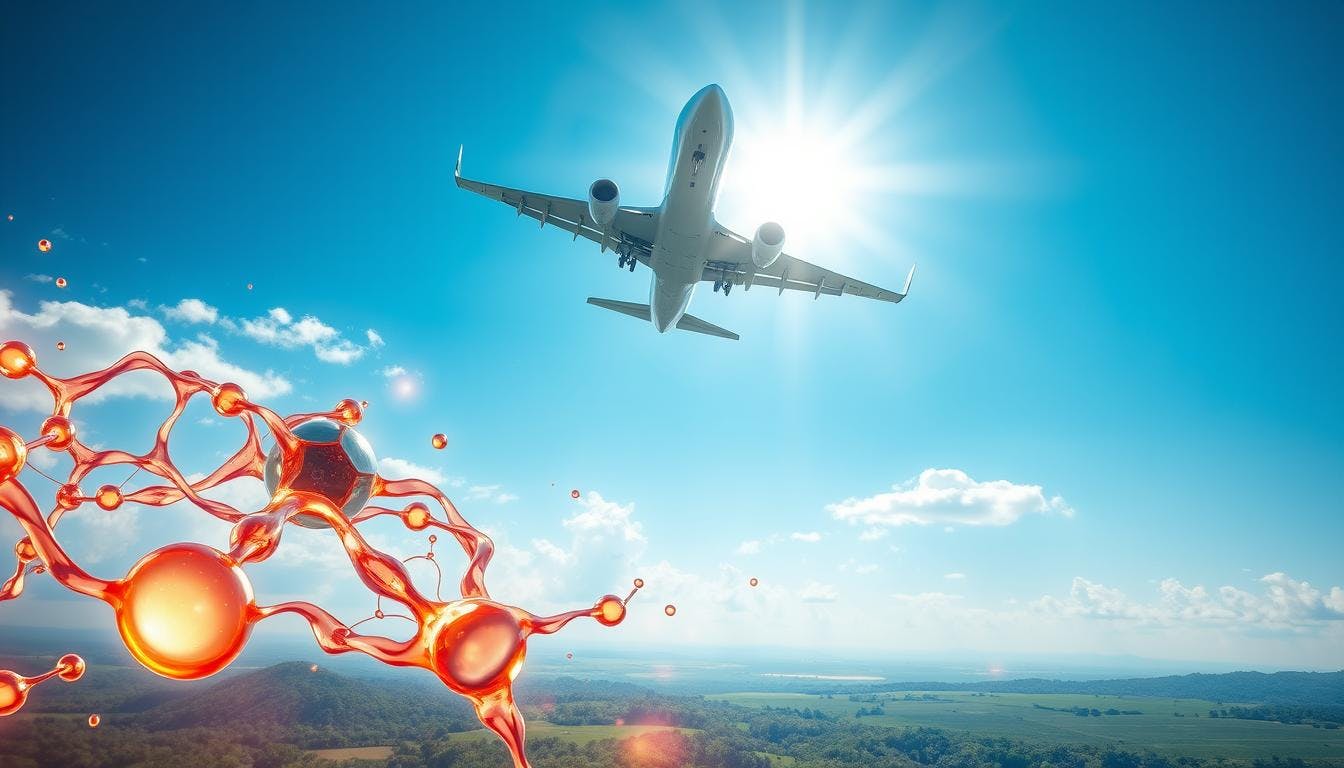
Alcohol-to-Jet (ATJ) synthetic paraffinic kerosene
The Alcohol-to-Jet (ATJ) Synthetic Paraffinic Kerosene pathway is gaining significant attention. It converts cellulosic or starchy alcohols into a fuel that can be used in aircraft. This process involves several steps, including dehydration and hydrogenation.
ASTM International has approved this method, allowing for up to 50% of the fuel to be produced from this process.
This method offers numerous benefits. It utilises various types of alcohol, such as isobutanol and ethanol, which can be sourced from materials like plant waste and wood.
This diversity enhances the fuel supply chain and contributes to making flying more sustainable. Over 360,000 flights have used Sustainable Aviation Fuel (SAF) so far, including ATJ-SPK, which has been employed at 46 airports in the US and Europe. This reflects the industry's commitment to sustainability.
The aim is to increase the use of this fuel in the future. By 2030, the target is to utilise 3 billion gallons, and by 2050, 35 billion gallons. This represents a significant step towards a cleaner aviation sector.
Catalytic hydrothermolysis synthesized kerosene (CH-SK)
The aviation industry is seeking new methods to produce sustainable aviation fuel (SAF). Two significant advancements are the Catalytic Hydrothermolysis Synthesised Kerosene (CH-SK) and Hydrocarbon-Hydroprocessed Esters and Fatty Acids (HC-HEFA) methods. These innovative approaches could substantially lessen the environmental impact of air travel.
Catalytic hydrothermolysis synthesised kerosene (CH-SK)
The CH-SK method, also known as hydrothermal liquefaction, combines clean free fatty acid oil with hot water. It then undergoes processing in a specialised reactor to produce SAF. This method has been verified by ASTM International and can be blended up to 50%.
Hydrocarbon-Hydroprocessed esters and fatty acids (HC-HEFA)
The HC-HEFA method, approved by ASTM in 2020, converts oil from Botryococcus braunii algae into jet fuel. This novel approach has a blend limit of up to 10%. This represents a significant step towards more sustainable aviation fuel.
Both CH-SK SAF and HC-HEFA SAF demonstrate the industry's commitment to exploring new fuel options. They are paving the way for a cleaner future in aviation.

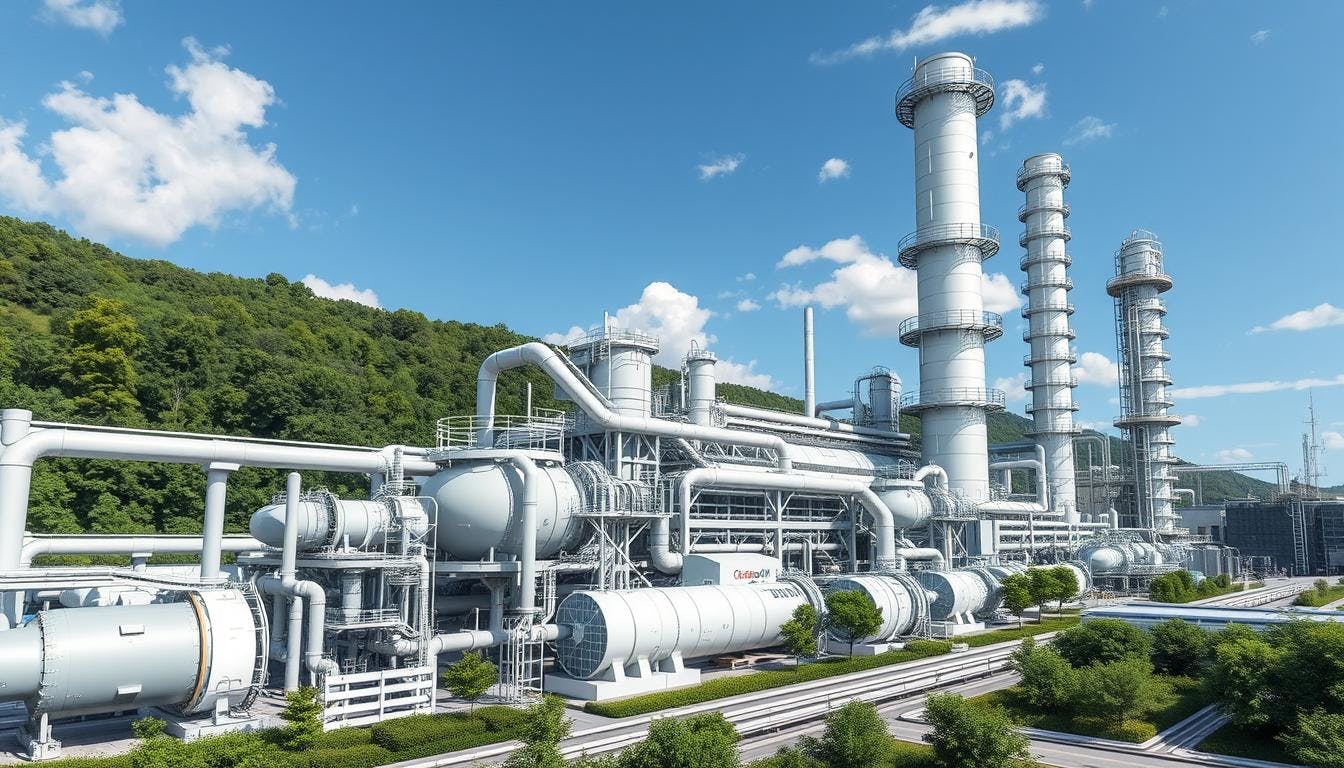
Co-Processing pathways for SAF production
The aviation industry is progressing towards sustainability. A significant development is the approval of co-processing pathways for Sustainable Aviation Fuel (SAF). ASTM International, the body responsible for fuel standards, has approved two primary co-processing methods: FOG Co-Processing and FT Co-Processing.
These methods allow refineries to blend up to 5% of renewable materials with regular petroleum oil, making it easier to utilise existing facilities. This approach aids in meeting the stringent SAF targets established by governments.
ASTM sets high standards for the quality and safety of co-processed SAF, which must perform equivalently to conventional jet fuel. However, using renewable materials can present challenges, particularly in selecting the appropriate dewaxing catalyst to satisfy the -40°C freeze point requirement.
Additional co-processing pathways are expected to receive approval soon. This, along with improvements in feedstock and technology, will support the expansion of co-processing SAF, fats, oils, and greases, as well as FT co-processing.
Feedstocks for sustainable aviation fuel
Sustainable aviation fuel (SAF) is derived from various non-petroleum-based sources, which helps make air travel less harmful to the environment. The primary types are biofuel feedstocks and synthetic fuel feedstocks.
Biofuel feedstocks
Biofuel feedstocks include waste materials from cities, farms, and forests. They also encompass energy crops, vegetable oils, animal fats, and waste greases. These materials are converted into SAF using methods such as Fischer-Tropsch and HEFA.
Utilising waste feedstocks reduces methane emissions and lowers the carbon footprint of SAF.
Synthetic fuel feedstocks
SAF can also be produced from synthetic fuel feedstocks like sustainable hydrogen and captured carbon dioxide. These power-to-liquid (PtL) or eFuel methods can further diminish emissions and potentially achieve net-zero carbon emissions through carbon capture.
The use of these synthetic feedstocks represents a significant advancement towards a more sustainable aviation industry.
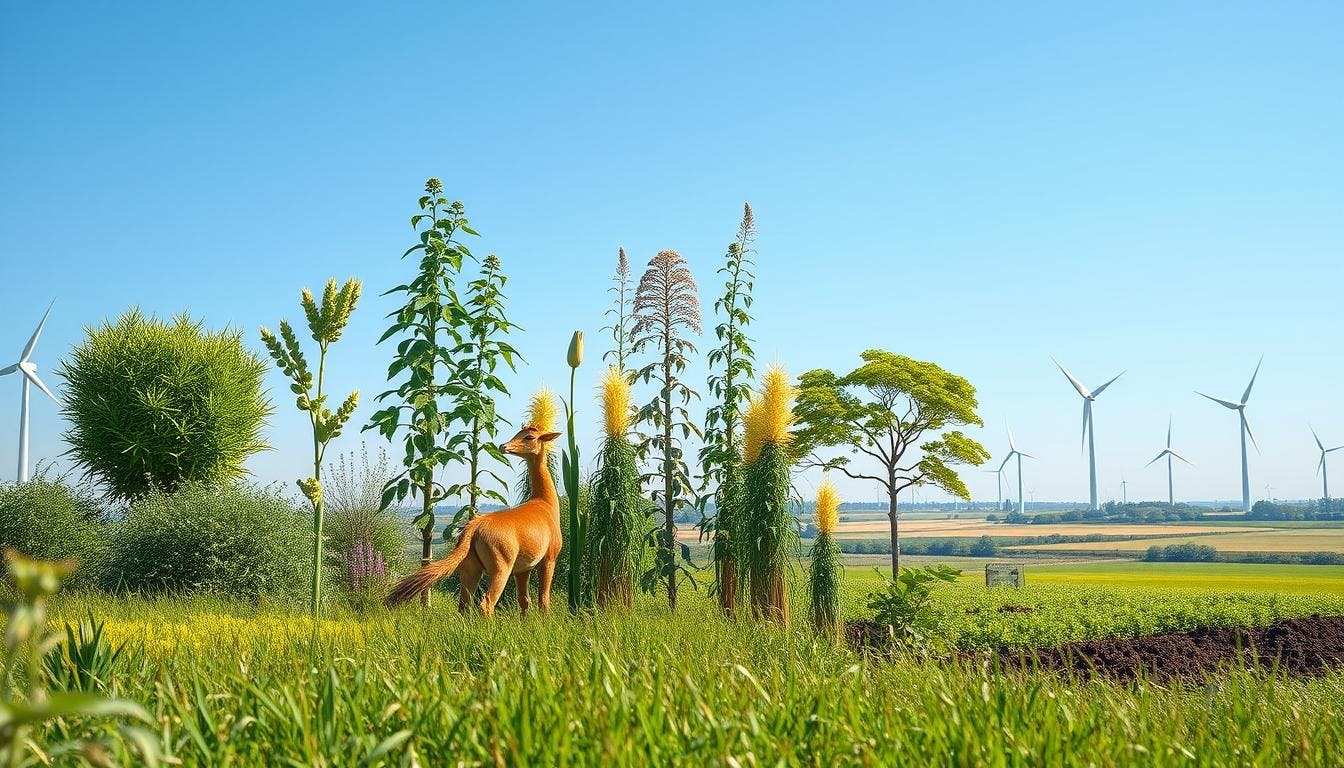
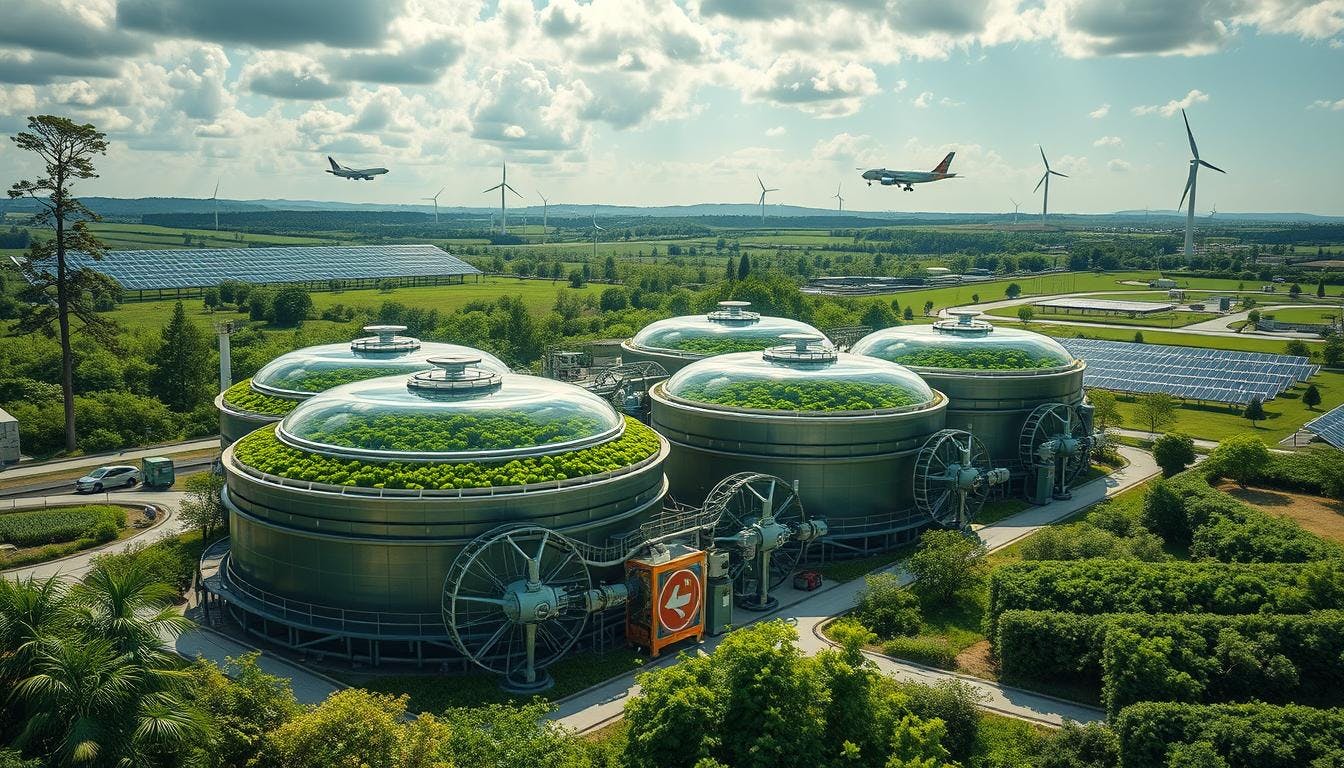
Challenges and future prospects of SAF
The sustainable aviation fuel (SAF) industry is facing significant hurdles. It needs to increase production and distribution to achieve widespread usage. Currently, SAF accounts for only 0.2% of aviation fuel, with just 600 million litres produced in 2023.
This presents a considerable challenge, as SAF is much more expensive than conventional jet fuel. This makes it difficult to attain a price that is competitive and reasonable.
Scaling up production and distribution
To reduce costs, SAF production and distribution must expand. Collaboration among governments, industry stakeholders, and regulators is essential to address the main obstacles. They need to clarify regulations, improve infrastructure, and eliminate other barriers.
Utilising various production methods with local feedstocks can also enhance supply, making the SAF market more diverse and resilient.
Reducing costs and achieving price parity
The high price of SAF is a major concern, stemming from the limited availability of raw materials and the nascent stage of production technology. However, as the industry matures, costs should decrease.
Nevertheless, support from regulators and incentives are necessary to make SAF as affordable as traditional jet fuel. This will promote a transition towards more sustainable aviation options.
Overcoming these challenges is crucial for the success of SAF. With collaborative efforts, the industry can grow, leading to a more sustainable future for aviation.
Research and development efforts in SAF
The focus on sustainable aviation fuel (SAF) is increasing globally. In the United States, efforts are underway to make SAF more prevalent, aiming to reduce the aviation industry's carbon emissions.
The U.S. Department of Energy, the U.S. Department of Transportation, and the U.S. Department of Agriculture are leading these initiatives. They support the research and development of SAF through various programmes. These government initiatives aim to enhance the availability and affordability of SAF, with a target of reaching 3 billion gallons of SAF per year by 2030 and meeting all aviation fuel needs by 2050.
The aviation industry is also playing a significant role. Airbus, a major aircraft manufacturer, is working on SAF certification and related projects. They are collaborating with airlines, airports, and SAF producers to develop the SAF ecosystem.
The Commercial Aviation Alternative Fuels Initiative (CAAFI), established in 2006, unites the FAA, airlines, and other industry stakeholders to support SAF. The National Renewable Energy Laboratory (NREL) is also conducting research on SAF, working alongside fuel standards organisations to improve low-carbon aviation fuel standards.
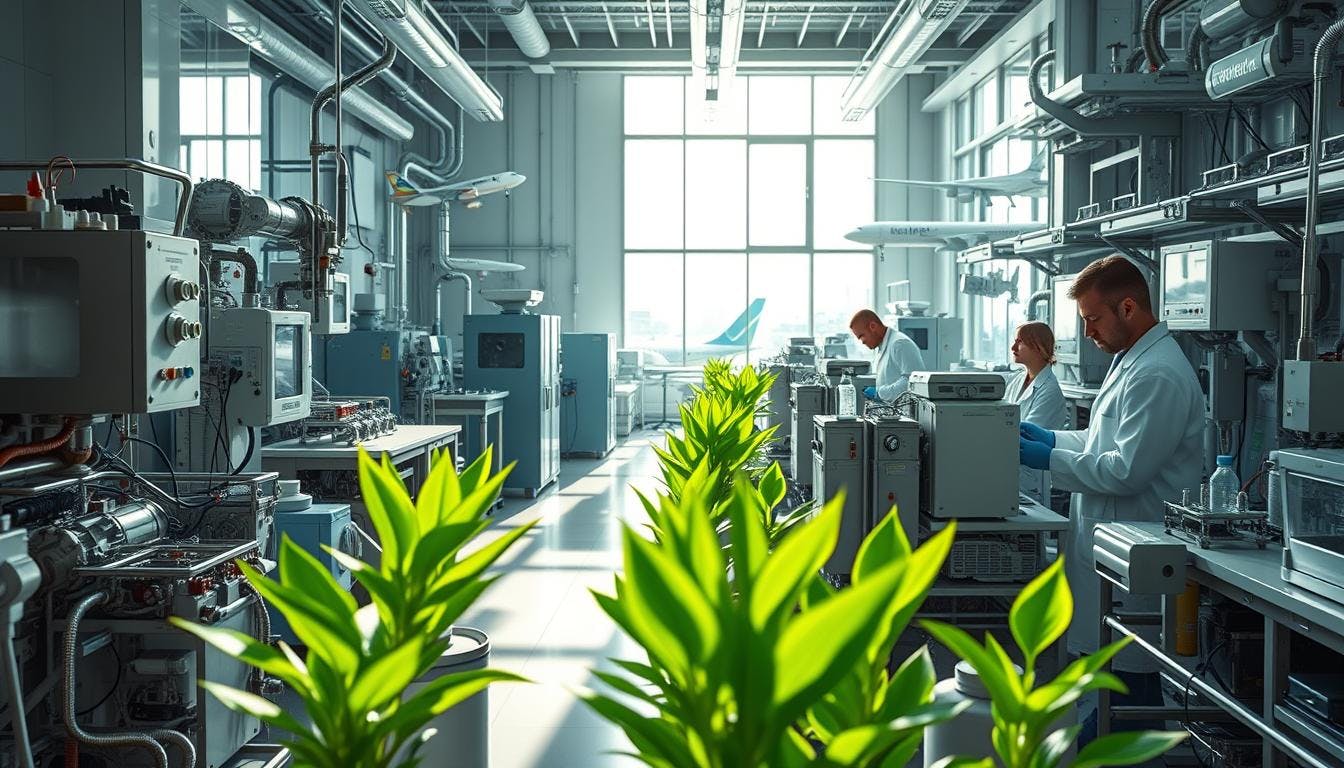
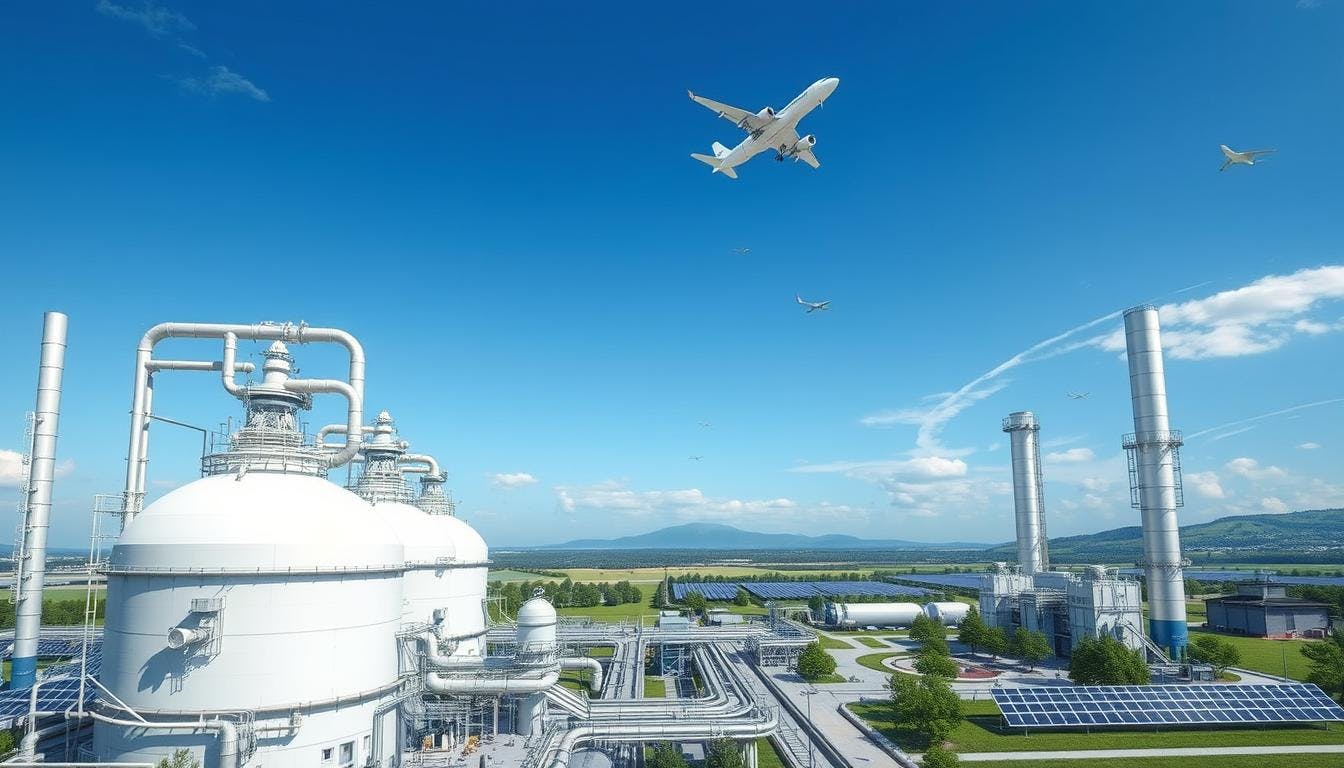
Sustainability and environmental impact of SAF
Sustainable aviation fuel (SAF) is more beneficial for the environment than conventional jet fuel, with the potential to reduce greenhouse gas emissions by up to 80% over its lifecycle. This reduction is essential for the aviation industry to decrease carbon emissions.
Currently, air travel contributes approximately 2-3% of global greenhouse gas emissions. This figure is expected to rise, potentially doubling by 2050 in the U.S. and worldwide.
SAF utilises carbon that is already in the atmosphere, rather than relying on fossil fuels from the past. This makes it a more sustainable option for aviation. However, producing SAF from crops can sometimes release more carbon than conventional jet fuel, particularly due to land use changes, such as the destruction of peatlands and rainforests.
Organisations like the International Civil Aviation Organization (ICAO) and the European Union consider SAF to be vital for achieving their goals. They aim for net-zero aviation emissions by 2050. The EU's ReFuelEU Aviation law mandates that at least 2% of fuel at EU airports must be SAF by 2025, increasing to 20% by 2035 and 70% by 2050.
The UK Department for Transport is also planning to make the use of SAF mandatory. They aim for flights from the UK to utilise at least 4% SAF by 2025, increasing to 75% by 2050. These initiatives demonstrate a strong commitment to adopting SAF and reducing the environmental impact of air travel.
17 South Street
Auckland 1010
New Zealand
info@carbonclick.com- -
- X
Subscribe now to stay up to date with CarbonClick, carbon offsetting and climate action.
By signing up you agree to our Privacy Policy.


